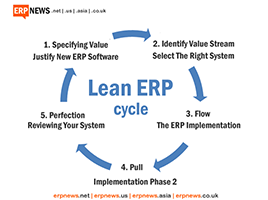We are all more than familiar with the benefits that the cloud brings to our lives outside of work – we no longer have 100’s of CD’s filling our bookshelves, we use on demand streaming services to listen to music, which means we can be a fickle with our music tastes without worrying about where we will store all the ill thought out music choices we have made.

Same applies to banking, right? We used to have to make an appointment with the bank manager to request a loan. Now we can just log into our online banking service and apply from the comfort of our arms chair – the banks have enough intel stored on us for a decision to be made instantly, with our us having to dig out payslips from 1984.
However, product-centric businesses appear slower to catch up – but as the workforce begin to demand the same technology in their work lives as they enjoy in their private lives. We are seeing the tide turn and businesses, gradually, are seeing the benefits of storing data in the cloud. These benefits can include cost savings across hardware and deployment, an upgrade free world, the availability of AI, and also the emerging idea of collective insights – where we can begin to predict customer trends using big data analysis.
What is the future of ERP?
As businesses have continued to become more and more software-driven, Enterprise Resource Planning (ERP) software has quickly emerged as one of the key pillars of any modern digital strategy.
Although it has traditionally served the manufacturing sector, its influence is now being felt much wider across the organization. Indeed, businesses in virtually all industries are deploying ERP software to connect disparate business processes and solve a myriad of challenges. These include everything from streamlining operations to managing complex business processes and using data to augment human decision-making.
The business benefits of ERP are clear to see but, when it comes to picking the right type of deployment, things aren’t quite as straightforward. From hosted and on-premise to public cloud and private cloud, there are a whole host of options for organisations to consider amidst a changing market landscape.
It’s also important to remember that not all business needs are the same. Just because cloud is the right option for one business, it doesn’t mean it will be for another, so understanding which deployment option best suits them is vital to ensuring a smooth implementation.
Deployment dilemmas
On-premise deployments have traditionally been the norm in the ERP space. Not only do on-premise ERP provide businesses with full control and autonomy over their data, it also offers greater scope for customisations and enables in-house IT teams to respond to issues immediately. But times have changed. They are now perceived as being expensive and complex compared to cloud-based deployments, which are generally quicker, cheaper and less resource-intensive.
On-premise deployments generally require a large capital investment for the perpetual licences and the infrastructure, the cost of which will vary depending on the size of the organisation or the number of concurrent users. There are then recurring fees for support, training and updates, along with the potential need to hire additional personnel to run and manage the system.
As such, cloud deployments are coming to the fore, with a new report predicting that the cloud-based ERP market will grow from $14.7 billion in 2017 to $40.5 billion by 2025. As well as the reduced up-front costs, this shift is being driven by factors such as the high level of performance that cloud platforms offer (e.g. high availability, low latency) and the fact that the business itself isn’t responsible for managing or maintaining the platform.
Public cloud environments provide businesses with the agility they need to remain competitive in today’s fast-moving business landscape, while generally being cheaper than private cloud platforms and enabling businesses to capitalise on their vendor’s innovation roadmap.
On the other hand, private cloud can provide an added layer of security, as an organisation’s data will be completely isolated from anyone else’s. They can also offer greater capacity for personalisation, as businesses have more influence over upgrades and modifications.
Finally, we have hosted deployments, which in many ways provide a middle ground between on-premise and cloud. By hosting their platform in a third-party datacentre, businesses can maintain ownership and control of the database, but still hand the responsibility of managing the hardware over to the data centre provider.
Putting specific business needs front and centre in the decision-making process is key here, a one size fits all solution simply isn’t available. So, ahead of choosing the right supplier, it’s imperative to put identifying the right deployment option for your business at the top of the ‘to-do’ list.
Meeting business needs
So, how can businesses pick the right deployment option to suit them? By focusing on a few fundamental factors. For example, one key driver is the eternal debate between CapEx and OpEx.
Generally, businesses that opt for a hosted or on-premise deployment will have a perpetual licence with a one-off cost, rather than a subscription-based licence more commonly found in cloud environments. They will also manage software updates in house, at a time that suits their operations. However, some businesses will want to take a different approach depending on where they are in their lifecycle.
For a business that is growing fast, a subscription licence in the cloud could be more appropriate because it will enable them to easily add services, scale up their infrastructure and continually be on the latest version of the software due to automatic updates.
Choice is the operative word here. Ultimately, it’s important to remember that every business is unique. Rather than simply following the crowd, businesses should take the time to work out their key requirements and choose a deployment option that will provide them with the best platform for future growth.
About Sage
Sage (FTSE: SGE) is
the global market leader for technology that helps businesses of all sizes
manage everything from money to people – whether they’re a start-up, scale-up
or enterprise. We do this through Sage Business Cloud – the one and only
business management solution that customers will ever need, comprising
Accounting, Financials, Sage Intacct, Enterprise Management, People &
Payroll and Payments & Banking.
Our mission is to free business builders from the burden of admin, so they can
spend more time doing what they love – and we do that every day for three
million customers across 23 countries, through our 13000 colleagues and a
network of accountants and partners. We are committed to doing business the
right way, and giving back to our communities through Sage Foundation.
By
Rob Sinfield, VP, Sage Business Cloud Enterprise Management







